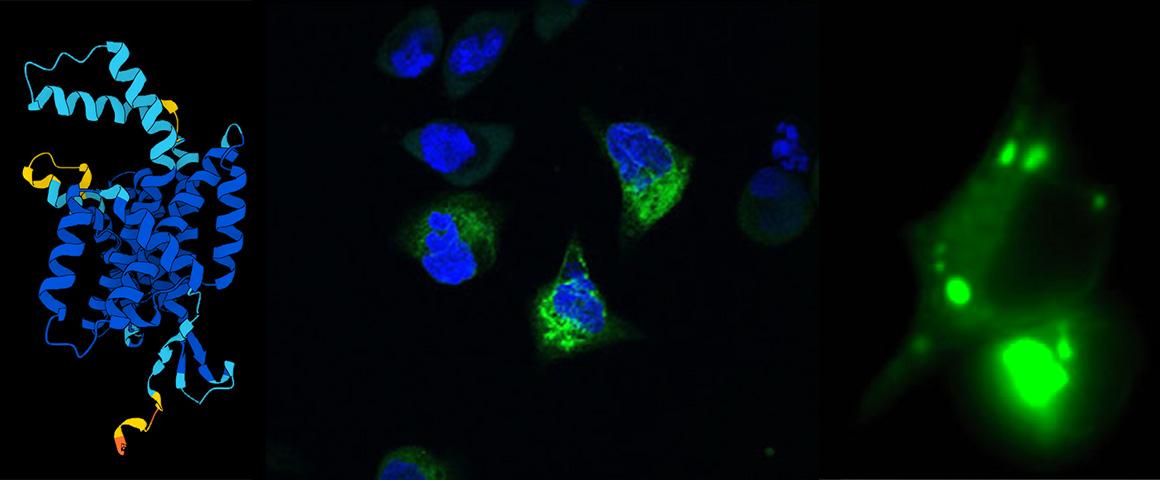Results & impact 10 October 2025
- Home
- Press area
- Press releases
- Brucella: the bacteria that find the sweet spot
Brucella: the bacteria that find the sweet spot

Image representing from left to right: a 3D structure of the protein Rhg1, then its expression in the host cell.
A new study published in Cell Host & Microbe, with the collaboration of researchers from CIRAD, reveals how the bacterium Brucella, the causal agent of brucellosis, reprogrammes the sugar metabolism in host cells to favour infection.
The key role of the Rhg1 protein
Led by Paul de Figueiredo, a bacteriologist from the University of Missouri, the team of scientists focused on Rhg1, an effector protein secreted by the bacterium that enables it to manipulate host cells so it can survive and reproduce.
The researchers show that this protein induces global reprogramming of the host cell N-glycome, in other words the set of all sugars attached to a cell’s proteins.
This reprogramming helps the bacteria to survive inside the cells by interacting with a set of molecules known as the OST complex, which is crucial for protein glycosylation, a fundamental process in protein folding and stability.
Evading the host’s immune response
The manipulation of the host’s N-glycome by Rhg1 is a strategy developed to evade the host's immune response, a previously unexplored aspect of bacterial pathogenesis.
Understanding how Brucella alters host cell functioning opens opportunities for new therapies against brucellosis, a zoonotic disease affecting millions of people throughout the world.
New therapies
This study identifies not only the sophisticated interactions between the pathogen and the host, but also provides a basis for the development of new therapeutic strategies aimed at targeting bacteria manipulation mechanisms.
According to Damien Meyer, “this is a major step forward in the fight against infectious diseases”.
Brucellosis is a disease transmitted to humans mainly by domestic ruminants infected by the bacterium Brucella. People contract the disease from direct contact with infected animals or the consumption of contaminated animal products. It has significant health and economic impacts at the global level.
Reference
Cabello et al., Brucella-driven host N-glycome remodeling controls infection, Cell Host & Microbe (2024)
https://doi.org/10.1016/j.chom.2024.03.003



























